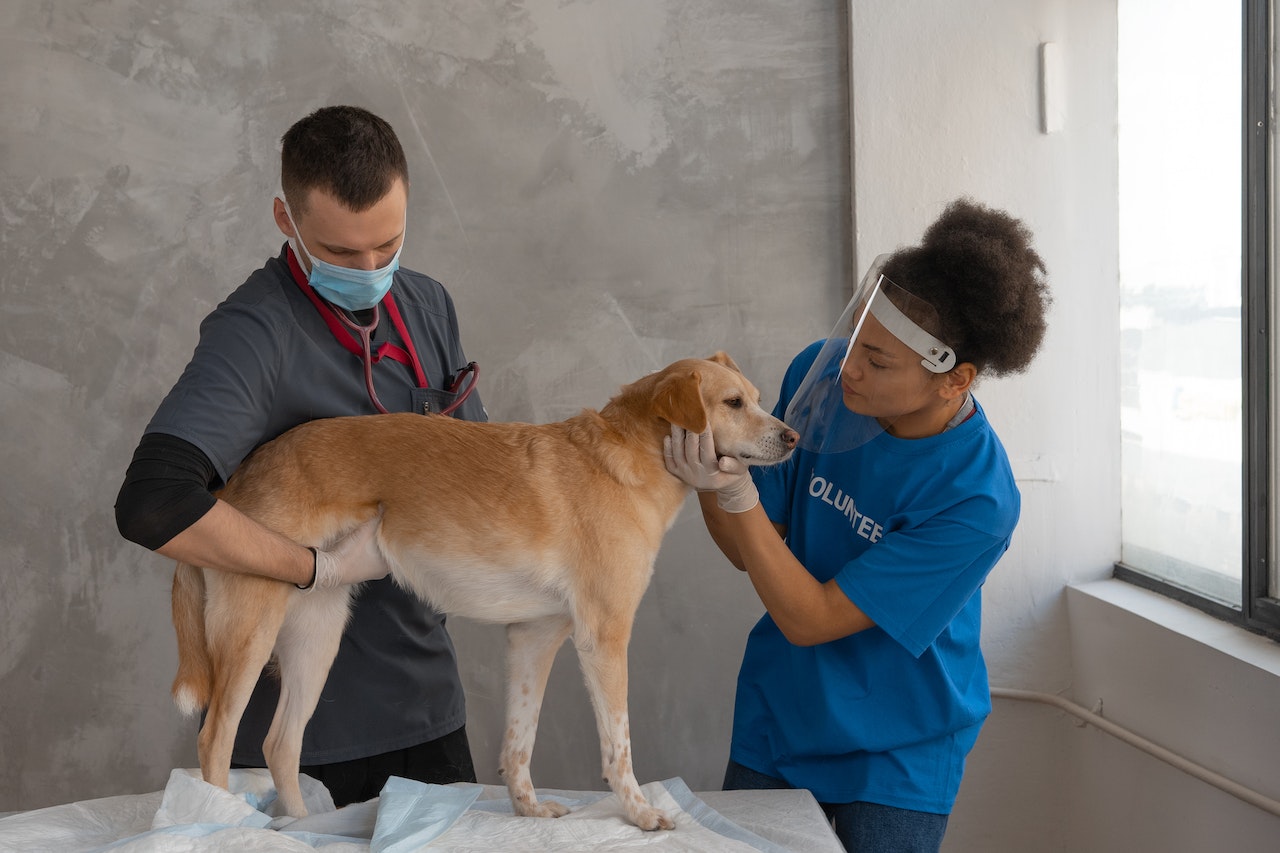
It can be devastating to learn that your dog suffers from elbow dysplasia. Dogs with elbow dysplasia are affected by abnormal, hereditary development of the elbow joint that causes malalignment in the forelimb bones. Although you may not be able to identify the exact cause of elbow dysplasia in your dog, it is likely that you know it is incurable and can have a significant impact on your dog’s quality of life. Knowing which dogs are most susceptible to elbow dysplasia and the symptoms, diagnosis, and treatment options will help you quickly identify what is happening and improve your dog’s quality of life.
Certain breeds of dog have a higher chance of developing elbow dysplasia

It is a good idea to learn about the breeds that are most susceptible to elbow dysplasia before you start your search for the right dog. This information could help you steer clear of certain breeds or modify the medical requirements you require before you bring your new pet home. All of these considerations should be considered with your lifestyle and what you want to do with your dog. Are you looking for your dog to be active and agile? Do you feel comfortable accepting this diagnosis? Is your dog a working dog? How will this diagnosis affect your relationship with your dog? And how can you manage the financial impact of the disease on your pet parents’ budget? Here is a list indicating which breeds are at higher risk of developing elbow dysplasia.
- German Shepherd Dogs
- Labrador Retrievers
- Rottweilers
- Golden Retrievers
- Bernese Mountain Dogs
- Newfoundlands
The hereditary condition of elbow dysplasia affects medium-sized dogs more than small breeds. This condition is not only a problem for senior dogs.
Dogs with elbow dysplasia symptoms
Dogs with elbow dysplasia can experience abnormal pressure on their joints and wear and tear to the cartilage (cushion). This causes severe osteoarthritis.

It is important to understand what happens in dogs with elbow dysplasia to be able to recognize the symptoms and signs. Elbow dysplasia is characterized by abnormal pressure on the joints and wear and tear to the cartilage (cushion of the joint), which leads to severe osteoarthritis. This disease affects both the elbows more often than the other. Ear dysplasia can be seen in dogs as follows:
- Forelimb lameness, or limping, is the most common sign of elbow dysplasia. These elbow joints are found on a dog’s front legs. It is easy to spot forelimb weakness, but subtle forelimb weakness can be more difficult.
- Head bobbing is often accompanied by forelimb lameness. This may become more severe if your dog is physically active or awakens from a deep sleep.
- High endurance or low tolerance for long walks.
- The elbow joint has a reduced range of motion and flexibility
- Dog feels pain during an orthopedic exam
- Dog can appear “stiff” while walking or standing up
These symptoms should be noted to your veterinarian immediately.
Dogs with elbow dysplasia can be diagnosed
Your veterinarian will perform a few diagnostics before you can make a formal diagnosis if your dog is suspected of having elbow dysplasia. These diagnostics are:
Examining
A physical and orthopedic exam is the first test to diagnose elbow dysplasia. An orthopedic exam will allow your veterinarian to assess the dog’s flexion capacity and extension ability at each joint. They will also look for signs of pain, swelling, or loss of range-of-motion. A veterinarian should perform this assessment. A gait analysis may be performed by the veterinarian. This involves observing how your dog moves toward and away from your veterinarian.
Radiographic imaging
After a complete physical examination and orthopedic exam has been completed on your dog, and if elbow dysplasia remains suspected, your veterinarian may recommend radiographic imaging. You can have your dog awake for the X-ray, or you may need to give your dog mild sedation to ensure proper positioning. Your veterinarian may refer the image to a board-certified radiologist to confirm diagnosis.
CT scan
Some forms of elbow dysplasia require additional testing such as a CT scan. This process collects radiographs and then uses computer processing for more detailed information than a standard radiograph. The cost of a CT scan is typically between $1,500 to $2,000.
How to treat elbow dysplasia in dogs
There is no “cure” to elbow dysplasia. There is no treatment for elbow dysplasia. However, there are non-surgical options that can be used to help your dog manage the condition. These are just four:
Therapeutic modalities
Your pup may benefit from modalities like acupuncture, massages, laser, and ultrasound therapy to relieve the primary and compensatory pain caused by elbow dysplasia. These modalities can help your dog identify areas in his body that may be too hard to work in order for him to alleviate the pain. They also aid in maintaining a healthy body.
These therapeutic modalities for elbow dysplasia can be helpful in a number of ways, including:
- Recognizing and reducing inflammation
- Decreasing discomfort
- This improves flexibility and range of motion.
- Increase blood circulation and supply of nutrients to the muscles
- Reduce muscle atrophy and wasting
Many veterinary clinics will offer at least one of these modalities. These services are also available in mobile practice, which is becoming increasingly popular across the country. Search engines such as those of the American Holistic Veterinary Medical Association can be used to find a practitioner in your area.
Hydrotherapy
Hydrotherapy is a low-impact, effective exercise option for elbow dysplasia dogs! Hydrotherapy is a great way to increase mental health in water dogs that enjoy swimming. It’s one of the most painless ways to exercise these pups. Hydrotherapy can help maintain healthy muscles and prevent muscle wasting. Hydrotherapy also increases flexibility and range of motion. You can choose from dog pools, whirlpools, or underwater treadmills for hydrotherapy.
Weight Management
For dogs with joint diseases such as elbow dysplasia, weight management is crucial. It is easy to reduce pain and slow down osteoarthritis and joint degeneration by reducing excess weight at the elbow joints.
Weight management is best achieved by incorporating a routine that is manageable and comfortable for your dog. Dogs with elbow dysplasia may require different exercise routines depending on their individual case. It is possible to lose extra weight by taking a short walk twice daily.
Another important aspect of weight management is monitoring your caloric intake. You can also trade commercial treats for sweet potatoes, carrots, and green beans to help your dog manage their weight. For dogs who are food-motivated, you might consider making a food puzzle or freezing their meal in a Petsafe Chilly Penguin Toppl to increase entertainment and longevity.
Diet therapy
Although there aren’t any specific diets that can be used to treat or prevent elbow dysplasia in dogs, some diets work better than others.
Dr. Angie Krause says that dogs suffering from elbow dysplasia should eat a high-quality diet rich in omegas. A diet with less processed foods can help reduce inflammation in the system, which is important for dogs with joint disease. The most processed diets are kibble and canned food. There are also AAFCO balanced, raw, and home-cooked options. Salmon, anchovies and sardines are all high in omega.
You did nothing wrong or in error to cause elbow dysplasia in your dog. This is a genetic disease that can only be passed down from one generation to the next. While you cannot alter your dog’s genetic condition, you can modify his lifestyle and monitor him closely.